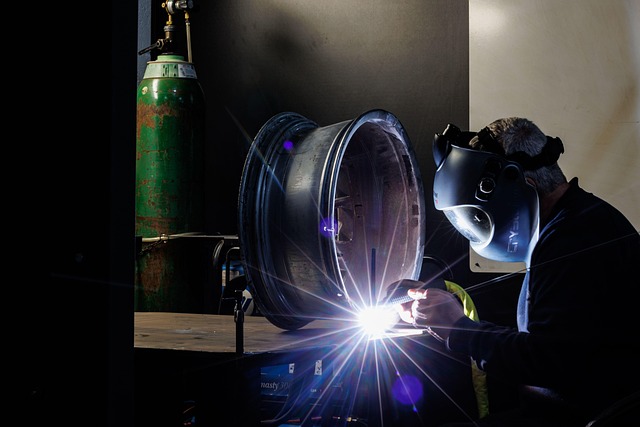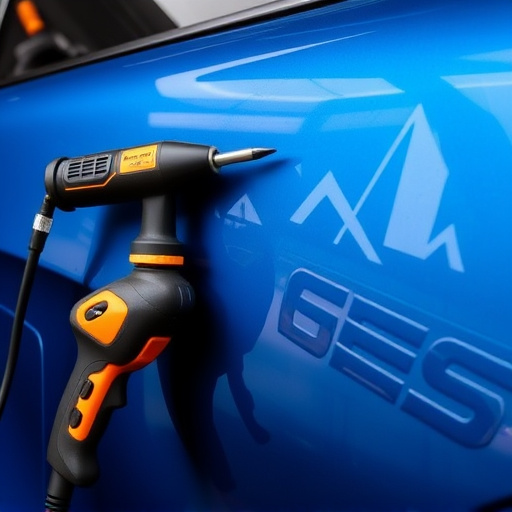Cosmetic repairs have faster turnaround times than structural work due to focus on aesthetics over safety and integrity. Structural repairs, with complexities like frame straightening and component replacements, significantly lengthen repair completion timelines because of meticulous assessments, time-consuming manipulation, and drying/curing times for adhesives and coatings aimed at meeting stringent safety standards. Effective project management practices, including planning, clear communication, flexible goal-setting, prioritizing tasks, and keeping clients informed, are crucial for managing both cosmetic and structural repair completion timelines.
“Understanding the repair completion timeline is vital for both cosmetic and structural renovations. This article delves into the distinct timelines associated with these two key areas of home improvement, highlighting the faster turnaround times for cosmetic repairs versus the more intricate processes involved in structural work. By exploring best practices, homeowners can optimize project timelines, ensuring efficient and timely completions.”
- Cosmetic Repairs: Faster Turnaround Times
- Structural Repairs: Lengthier Processes Unveiled
- Optimizing Project Timelines: Best Practices Applied
Cosmetic Repairs: Faster Turnaround Times

Cosmetic repairs, such as painting, detailing, and removing minor dents or scratches, typically have faster turnaround times compared to structural work. This is largely due to their nature; while structural repairs often involve complex fixings and need to ensure the safety and integrity of a building, cosmetic enhancements are more about aesthetics. In an auto body shop, for instance, car dent repair or auto body services for smaller issues can be completed in just a few days, whereas significant structural work could take weeks or even months. The former allows customers to quickly get their vehicles back in top condition, while the latter demands more time for materials to set and cure properly.
This distinction is crucial when considering a repair completion timeline. For those needing quick fixes like car dent repair, choosing a service that specializes in cosmetic work ensures they can get back on the road faster. It’s important to remember that while these repairs are quicker, they still require skilled professionals who understand the intricacies of their trade to ensure high-quality outcomes.
Structural Repairs: Lengthier Processes Unveiled

Structural repairs often involve complex processes that significantly extend the repair completion timeline compared to cosmetic work. In an auto body shop, for instance, a bumper repair might be relatively swift, especially if it’s a simple dent removal or a minor crack fix. However, structural repairs such as frame straightening or major component replacements demand intricate precision and time-consuming techniques. These processes necessitate specialized equipment and trained technicians to ensure the safety and integrity of the vehicle.
The complexity arises from the need to accurately assess and address underlying issues that could have resulted in the damage. For example, a collapsed hood or a bent chassis requires meticulous manipulation to return it to its original state. Moreover, structural repairs often involve drying and curing times for adhesives and coatings, adding layers to the repair completion timeline. Unlike a quick bumper repair in an auto body shop, these repairs demand patience and thoroughness to meet safety standards.
Optimizing Project Timelines: Best Practices Applied

In the realm of repair completion timelines, whether for cosmetic or structural projects, optimizing project schedules is paramount to client satisfaction and business success. Best practices in project management play a crucial role in achieving timely and efficient outcomes, especially when dealing with complex tasks such as automotive body work post car collisions. These practices involve meticulous planning, clear communication channels, and flexible yet realistic goal-setting. For instance, prioritizing tasks based on their impact on the overall timeline ensures that even if one aspect of the repair takes longer than anticipated, other components can be adjusted accordingly, minimizing delays.
Additionally, maintaining open lines of communication with clients throughout the process is essential. Regular updates about progress and potential challenges not only build trust but also allow for proactive adjustments to the repair completion timeline. In vehicle repair or automotive body work, this could mean keeping clients informed about part availability, unexpected complications arising from car collision repairs, and any necessary rescheduling. Such transparency fosters a sense of partnership, ensuring both parties are aligned towards a successful project conclusion.
In understanding the distinct repair completion timelines for cosmetic and structural work, homeowners can better prepare for their renovation projects. Cosmetic repairs, focusing on aesthetics, offer faster turnaround times, while structural repairs, involving critical building elements, demand more extended processes. By adopting best practices, such as thorough planning, clear communication, and efficient resource allocation, project timelines can be optimized to ensure timely completion without compromising quality. This knowledge equips homeowners with the tools to manage expectations and make informed decisions throughout their renovation journey.













